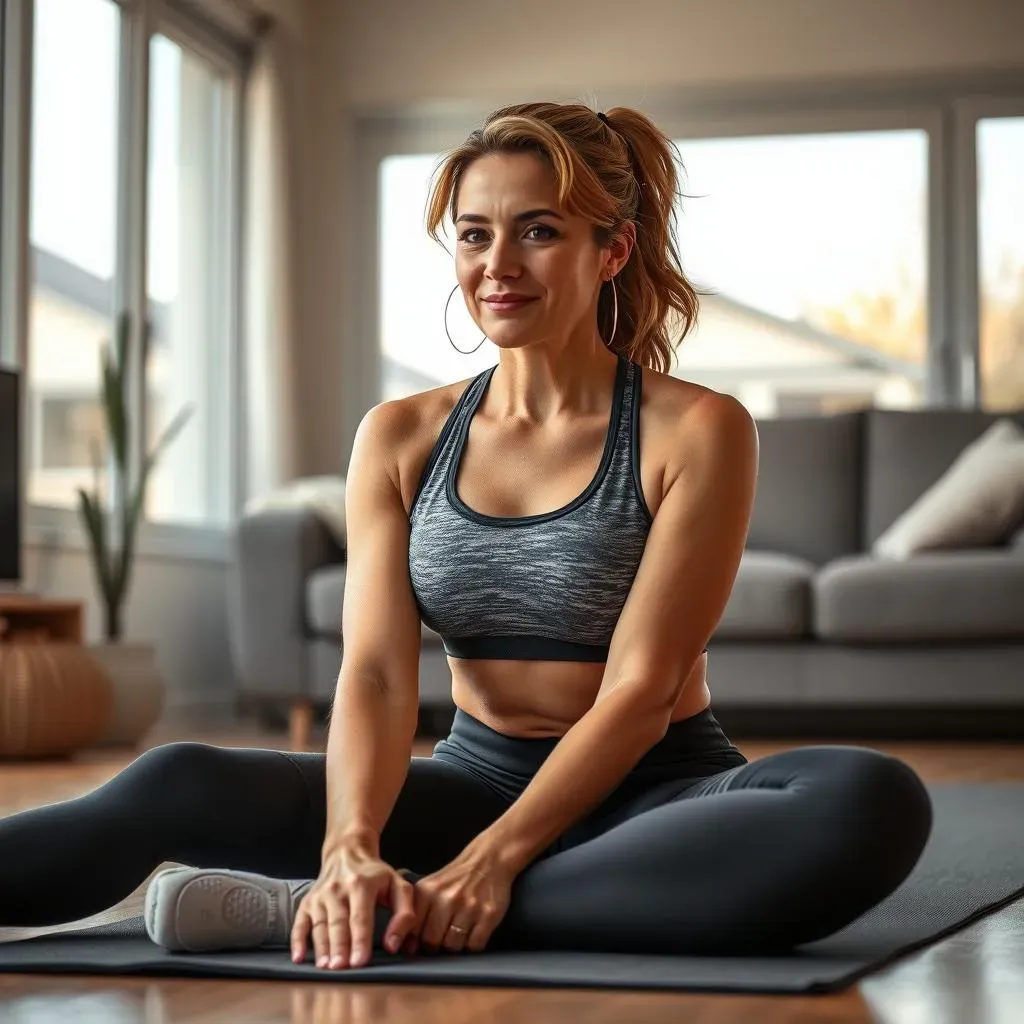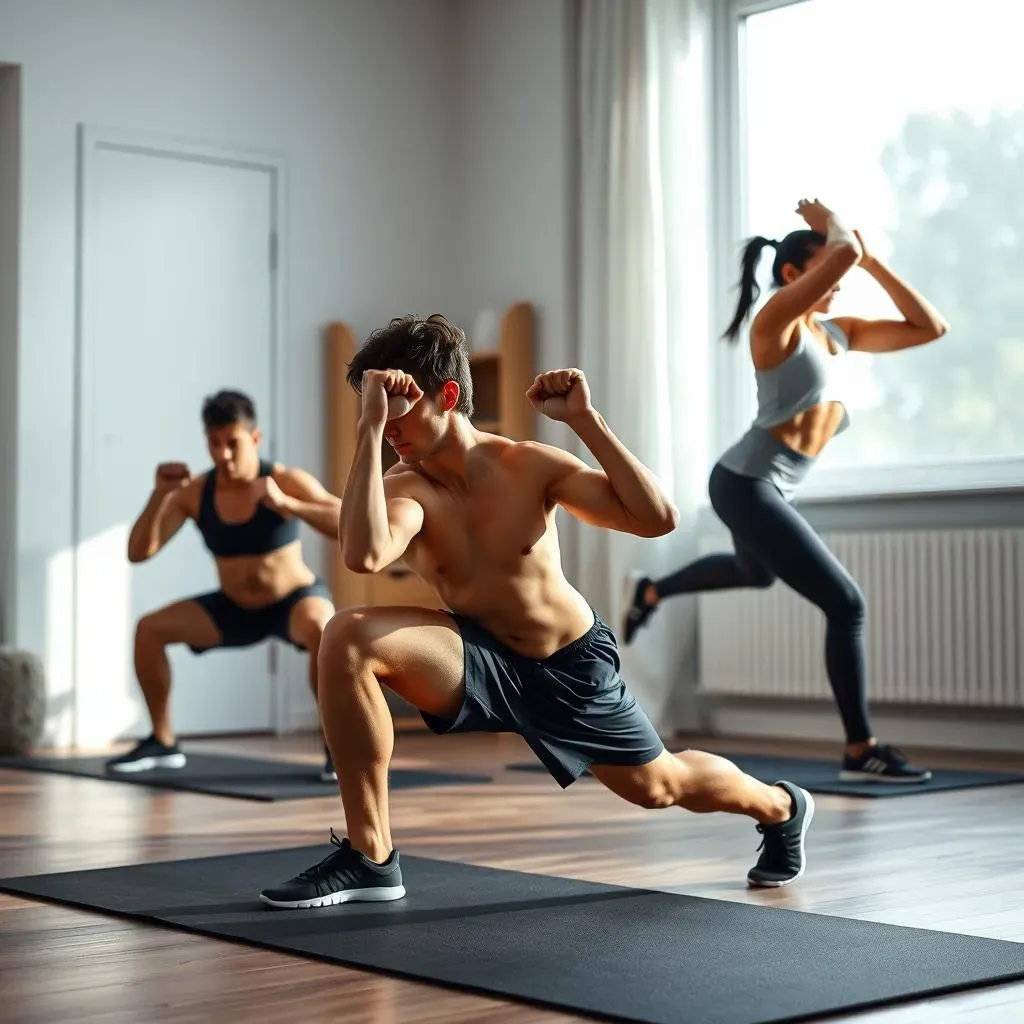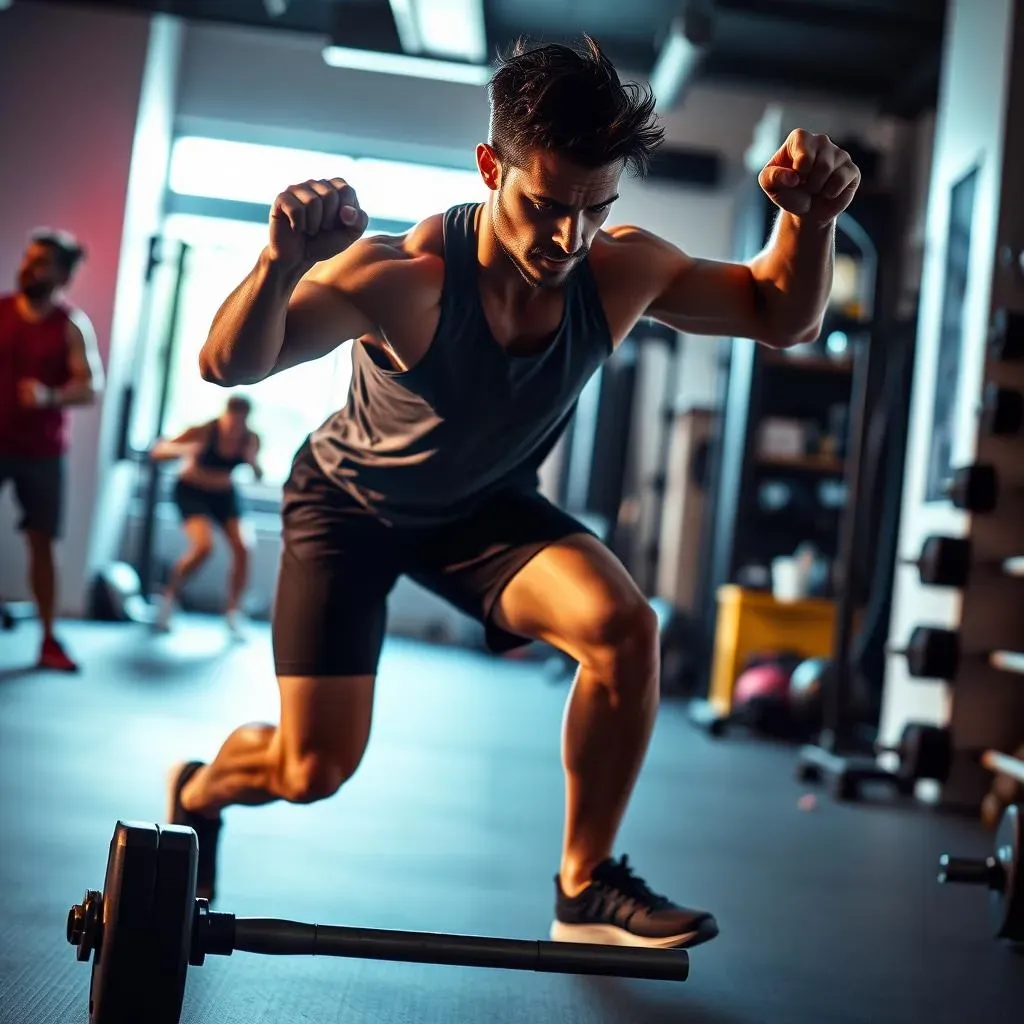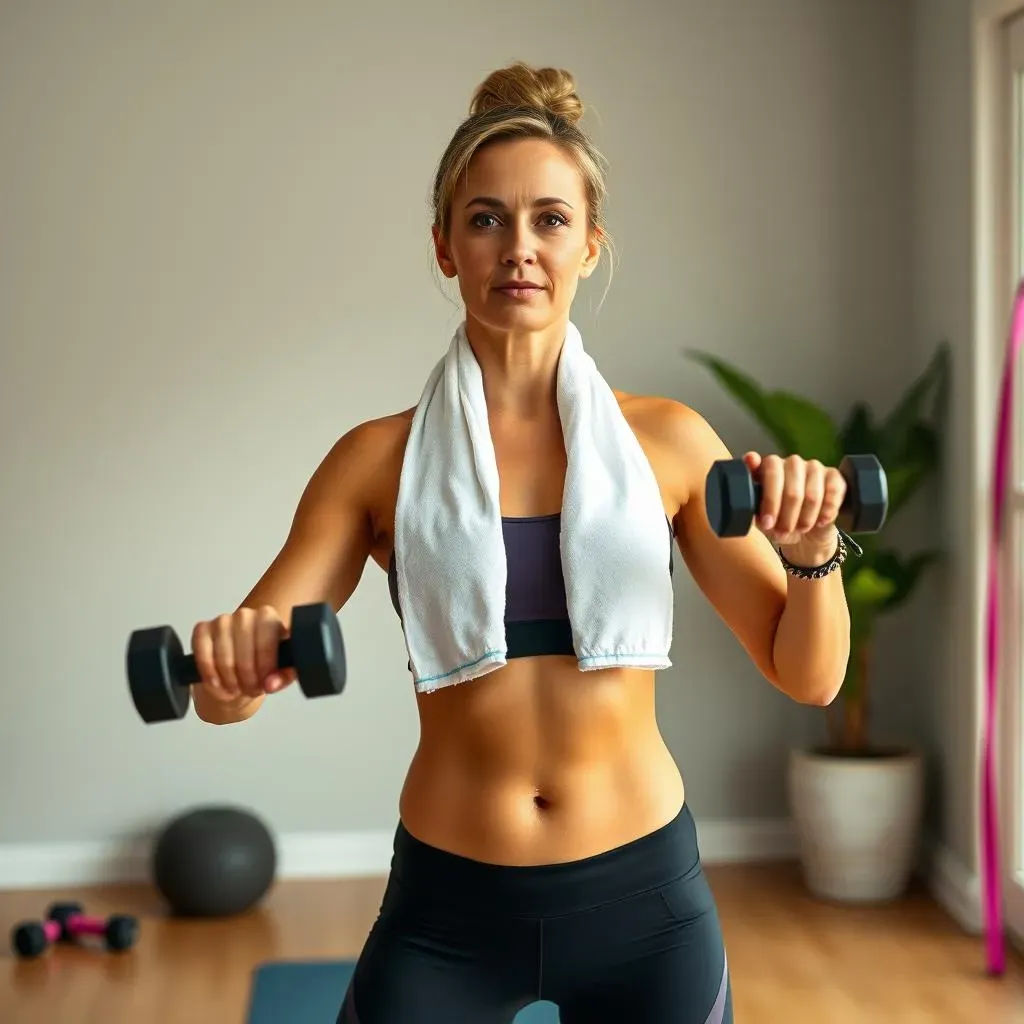Table of Contents
Tired of shaking the apartment building or feeling like your knees are staging a rebellion every time a workout calls for plyometrics? You want the sweat-dripping, calorie-torching power of high-intensity interval training, but the thought of burpee jumps makes you want to hide under the covers. Good news: you absolutely can get a killer cardio session right in your living room without leaving the ground. Effective hiit workouts at home no jumping are not only possible, they're incredibly effective for building strength, boosting metabolism, and shedding fat.
Why Skip the Hop? The Case for HIIT Workouts at Home No Jumping

Why Skip the Hop? The Case for HIIT Workouts at Home No Jumping
The Jumping Mandate: Is It Really Necessary?
Look, we've all seen the flashy workout videos. Explosions of energy, people leaping around like gazelles on espresso. It's easy to get the impression that if you're not bouncing off the floor, you're not really doing HIIT. The high-impact stuff feels dramatic, looks impressive, and yes, it jacks up your heart rate fast. For a long time, the go-to moves for calorie burn involved leaving the ground. Think burpees with a jump, jump squats, star jumps – the classics of making noise and potentially annoying everyone within earshot. But here's the thing: getting your heart pounding and muscles burning doesn't *require* air time.
The Downside of High Impact: More Than Just Annoying Neighbors
Jumping isn't just about the noise complaint from the apartment below. Every single time your foot hits the floor after a jump, your joints absorb significant force. We're talking knees, ankles, hips, even your spine. Do this repeatedly, especially if your form isn't perfect or you're carrying extra weight, and you're basically asking for trouble. Overuse injuries, joint pain, sprains – these are real risks. Plus, let's be honest, mastering explosive movements takes practice, and doing them fatigued in a small space can lead to awkward landings and potential mishaps. There's a smarter way to achieve intense results.
- Risk of joint stress (knees, ankles, hips)
- Increased potential for overuse injuries
- Loud impact noise in apartments/homes
- Requires more coordination for safe execution
- Doesn't suit everyone (past injuries, joint issues)
Finding Intensity on the Ground: The Power of No-Jumping HIIT
This is where the beauty of hiit workouts at home no jumping comes in. You don't need to subject your joints to repeated shock to get an effective, high-intensity workout. Intensity in HIIT comes from pushing yourself hard during the work intervals, regardless of whether your feet leave the floor. It's about exertion level, muscle engagement, and minimal rest. By focusing on powerful, controlled, low-impact movements, you can still spike your heart rate into that fat-burning zone, build serious strength, and improve your cardiovascular fitness – all while keeping your body happy and your neighbors peaceful. It's a practical, sustainable approach to home fitness.
Intensity Sans Impact: How NoJumping HIIT Delivers Results

Intensity Sans Impact: How NoJumping HIIT Delivers Results
Turning Up the Heat Without Leaving the Ground
Think intensity needs gravity assistance? Nah. You don't need to defy physics to get your heart rate into the red zone and challenge your muscles. Intensity in HIIT is less about the height of your leap and more about the *effort* you pack into those short work periods. It's about pushing your limits, moving quickly (but controlled), and making your muscles scream for mercy, all while keeping your feet firmly planted. We're talking about maximizing the work-to-rest ratio with movements that demand high energy output through muscle contraction and cardiovascular demand, not ballistic impact.
Leveraging Tension, Tempo, and Range of Motion
So, how do you make it intense without the bounce? It's about smart movement selection and execution. Consider adding resistance, even bodyweight resistance, through slower negatives or isometric holds. Think deep squats with a pause at the bottom, lunges with controlled tempo, or push-ups where you really focus on squeezing your chest and triceps. You can also manipulate tempo – move explosively on the concentric phase and slowly on the eccentric. Increasing the range of motion in exercises also demands more from your muscles and cardiovascular system. These techniques build strength and endurance just as effectively as their jumping counterparts, minus the wear and tear.
- Focus on controlled, powerful movements.
- Manipulate tempo (fast concentric, slow eccentric).
- Incorporate isometric holds (like a squat hold).
- Increase range of motion where appropriate.
- Add external resistance if available (bands, weights).
The HIIT Structure: Your Engine for Intensity
The secret sauce of any HIIT workout, jumping or not, is the interval structure itself. Short bursts of maximum or near-maximum effort followed by brief recovery periods. This cyclical pattern is what drives your heart rate up, challenges your anaerobic system, and creates that metabolic afterburn effect. Whether you're doing jump squats or speed skaters, the principle is the same: push hard during the work, recover briefly, and repeat. This structure ensures you stay in a high-intensity zone, delivering significant fitness benefits without needing any air time. It's the framework that makes hiit workouts at home no jumping so effective.
Your Bodyweight Arsenal: Key Moves for HIIT Workouts at Home No Jumping

Your Bodyweight Arsenal: Key Moves for HIIT Workouts at Home No Jumping
Building Your No-Jump Toolkit
so if we're ditching the jumps, what's left? A whole lot, actually. Your body is a surprisingly effective piece of equipment, capable of providing plenty of resistance and requiring serious effort when used correctly. Think about it: squats, lunges, push-ups, planks – these aren't exactly new or fancy, but when you string them together in a high-intensity format with minimal rest, they become absolute metabolic monsters. The goal here isn't complex choreography; it's about fundamental movements executed with power, speed (controlled speed, mind you), and intent. We're building a foundation of strength and endurance using just gravity and your own mass.
Foundation Moves That Pack a Punch
Let's get specific. Forget the star jumps; hello, walking lunges, reverse lunges, and lateral lunges. Instead of jump squats, try tempo squats, pulse squats, or squat walks. Burpees without the jump? Absolutely. Just step back, hit the deck (or a push-up), and step back up, maybe adding a standing knee drive or a high march at the top. Mountain climbers are already low-impact and high-intensity. Speed skaters can become lateral shuffles with a tap. The key is focusing on large muscle groups and compound movements that get a lot of bang for your buck in terms of calorie burn and muscle engagement. These are the workhorses of effective hiit workouts at home no jumping.
- Squat variations (Tempo, Pulse, Walks)
- Lunge variations (Walking, Reverse, Lateral)
- Plank variations (Shoulder Taps, Knee Taps)
- Modified Burpees (Step-back, no jump)
- Glute Bridges (Single leg variation adds challenge)
- Push-up variations (Incline, Knee, Standard)
- Bodyweight Rows (Using a sturdy table or railing)
Adding Layers of Intensity
Just because you're not jumping doesn't mean you can't make things brutally hard. Once you've mastered the basic movements, you can increase the intensity by manipulating variables other than impact. Slowing down the eccentric (lowering) phase of an exercise, adding isometric holds (like holding the bottom of a squat), increasing repetitions within the work interval, or using supersets (moving directly from one exercise to another without rest) will all significantly ramp up the challenge. You can also shorten your rest periods. These techniques keep the intensity high, ensuring your no-jumping HIIT workout is anything but easy and continues to drive results.
Structuring Your Sweat Session: Making Your NoJumping HIIT Count

Structuring Your Sweat Session: Making Your NoJumping HIIT Count
Timing is Everything: Setting Your Intervals
so you've got your arsenal of non-jumping moves ready to go. Now, how do you actually turn them into a high-intensity workout? It's all about the clock. HIIT isn't just doing exercises; it's doing them in specific, timed intervals. This is where you push hard for a set amount of time, then rest briefly before hitting it again. The magic ratio is often a short rest relative to the work period. Think 2:1 or even 1:1 work-to-rest. This structure forces your body to work anaerobically, which is where you get those serious metabolic benefits. You're not just moving; you're working against the clock to maximize effort.
Choosing your interval times depends on your fitness level and the exercises you pick. A common starting point is 20 seconds of work followed by 10 seconds of rest (the Tabata protocol, though true Tabata is specific). Or maybe 30 seconds work, 15 seconds rest. The key is that the rest is just enough to catch your breath before the next push. This relentless on-off pattern is what makes even simple bodyweight moves incredibly challenging and effective for hiit workouts at home no jumping.
Putting It All Together: Rounds and Flow
Once you've got your work and rest intervals sorted, you need to string your exercises together. You can cycle through a series of exercises, doing one after the other with minimal rest between them, then taking a slightly longer break after completing the full circuit. Or, you can do multiple sets of a single exercise before moving to the next. The circuit style is great for keeping momentum high and hitting different muscle groups quickly. Decide on the number of exercises (say, 6-10) and the number of rounds you'll complete. Start with 2-3 rounds if you're new to this, and work your way up to 4-5 as you get fitter. Remember, the goal is intensity during the work, not duration of the total workout. A solid no-jumping HIIT session can be done in 20-30 minutes, warm-up and cool-down included.
Here's a simple example structure:
- Warm-up (5 minutes: light cardio like marching in place, dynamic stretches like arm circles)
- Workout (20-25 minutes):
- Choose 8 exercises (e.g., Squats, Push-ups, Lunges, Plank, Glute Bridges, Mountain Climbers, Lateral Shuffles, Modified Burpees).
- Perform each exercise for 30 seconds.
- Rest for 15 seconds.
- Move to the next exercise.
- After completing all 8 exercises, rest for 60-90 seconds.
- Repeat for 3-4 rounds.
- Cool-down (5 minutes: static stretches holding each for 30 seconds).
Beyond the Bounce: Real Benefits of NoJumping HIIT Workouts at Home

Beyond the Bounce: Real Benefits of NoJumping HIIT Workouts at Home
Beyond the Bounce: Real Benefits of NoJumping HIIT Workouts at Home
So, you've seen how you can build intensity without launching yourself into the air. Now, let's talk about the payoff. Sticking with hiit workouts at home no jumping isn't just about being a good neighbor or protecting your joints (though those are solid pluses). This type of training delivers serious results across the board. You'll torch calories during the workout, yes, but the real magic is the "afterburn" effect – your body keeps burning calories at an elevated rate long after you've finished wiping the sweat off your brow. Plus, the focus on controlled, full-range movements builds functional strength and muscle tone. It improves your cardiovascular health just as effectively as high-impact cardio, boosting endurance and making everyday tasks feel easier. And because you're not dealing with the jarring impact, it's often a more sustainable approach, meaning you're more likely to stick with it consistently, which is the real secret to seeing lasting changes.
- Significant calorie burn during and after the workout (EPOC effect).
- Improved cardiovascular fitness and endurance.
- Increased functional strength and muscle tone.
- Reduced stress on joints (knees, ankles, hips).
- More sustainable for long-term consistency.
- Quieter workouts suitable for apartments or shared spaces.
Sweat Smart, Not Loud: Final Thoughts on No-Jumping HIIT
You've seen that ditching the jump doesn't mean ditching the intensity. By focusing on controlled, powerful movements and strategic intervals, hiit workouts at home no jumping offer a potent path to fitness. These routines respect your joints, keep the peace with neighbors, and still deliver the metabolic punch you expect from HIIT. Stop letting the fear of impact hold you back; your most effective, and quietest, home workout might just be the one where your feet stay firmly planted.
